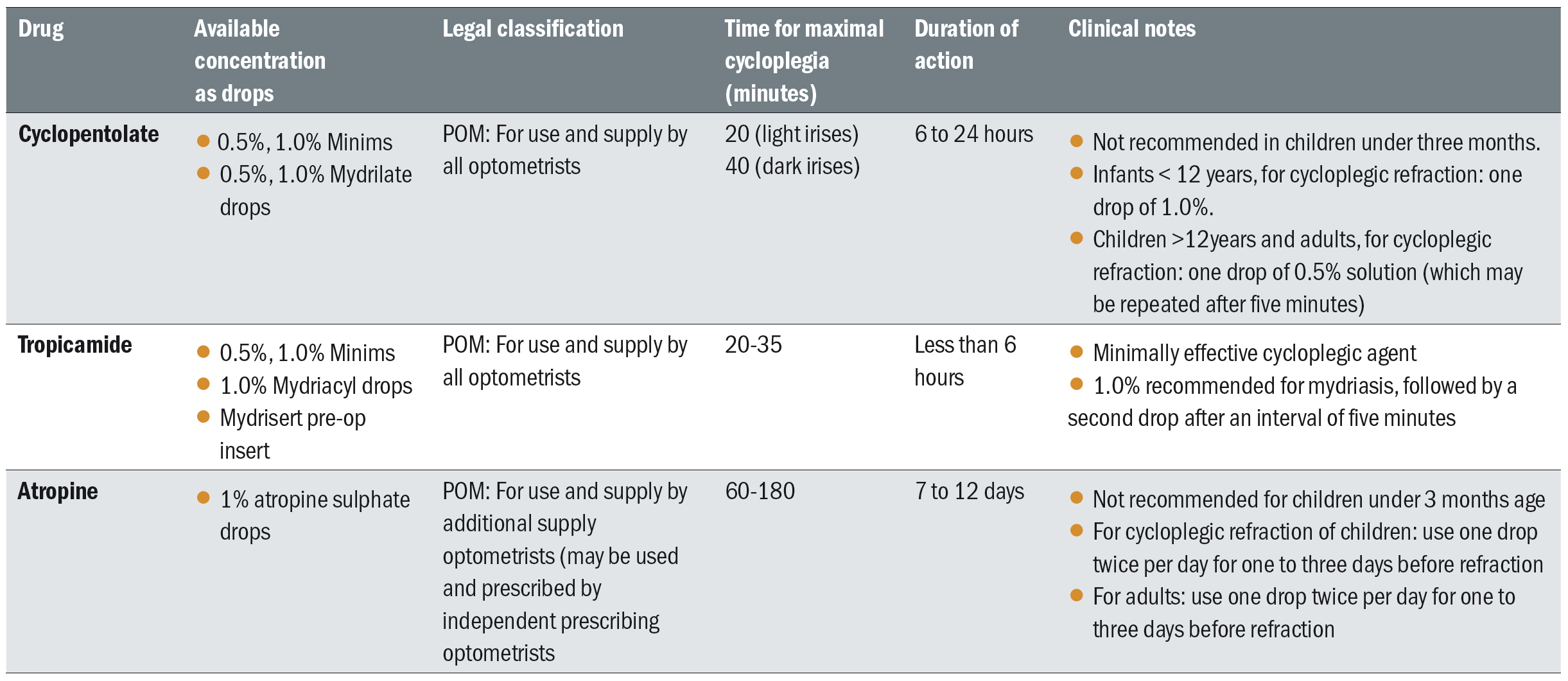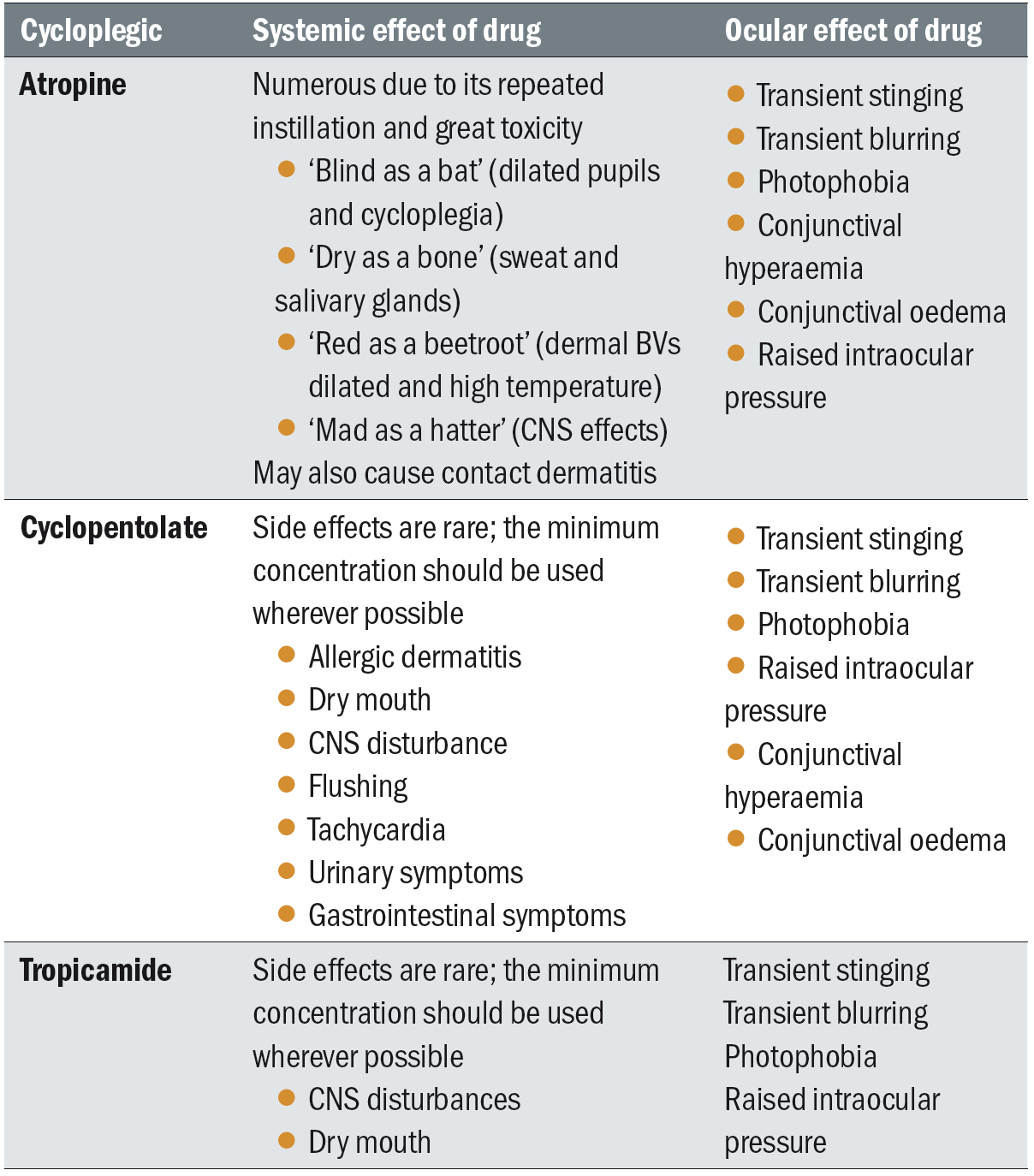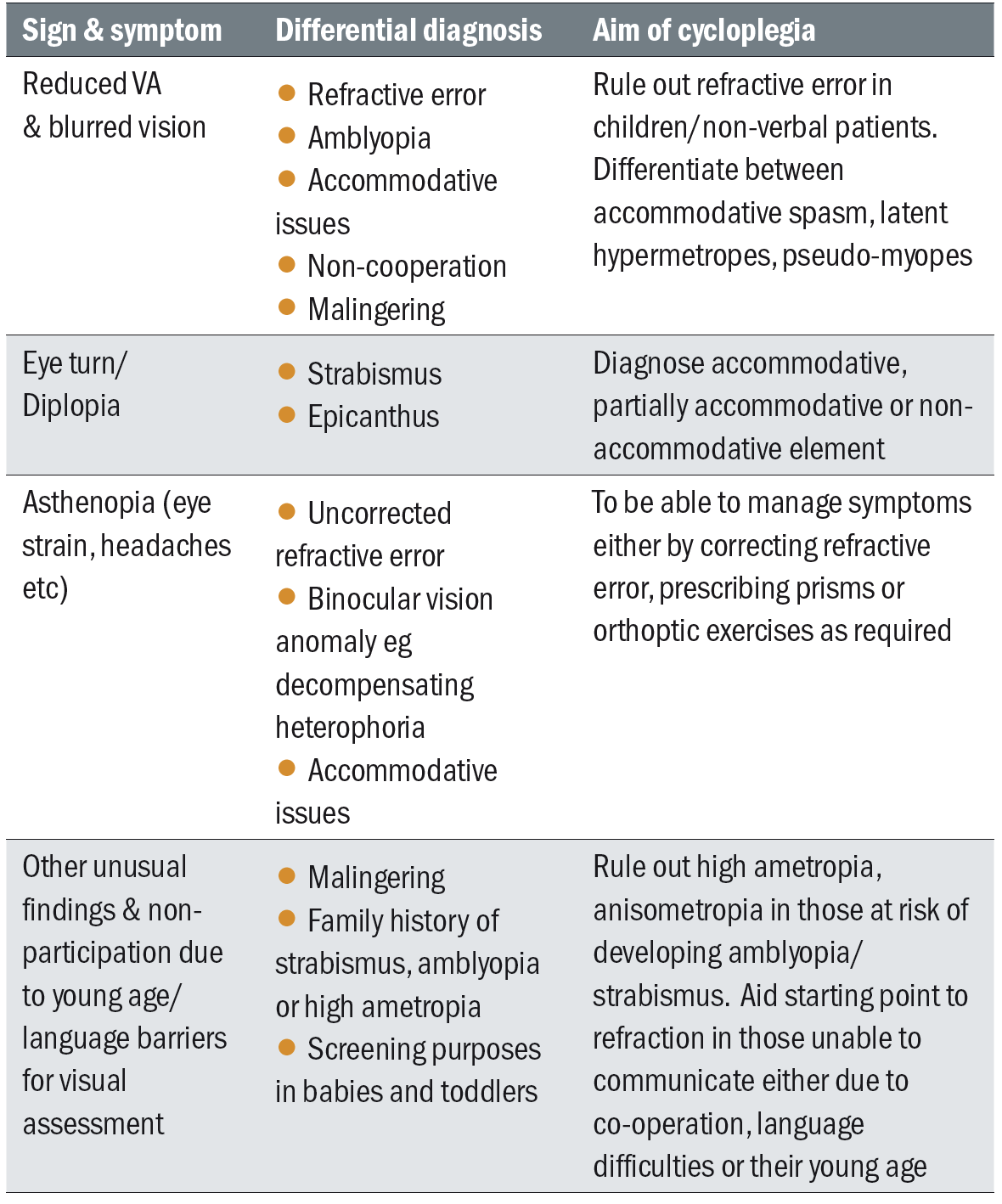An overview of the topic of cycloplegic refraction written by Sosena Tang appeared in last week’s Optician. This covered the following main themes:
- What is cycloplegia?
- What drugs cause cycloplegia and how do they work?
- What are the properties and adverse effects of cycloplegic drugs?
Tables 1, 2 and 3 helped summarise this information. There was also a discussion of how one might prescribe a correction after a cycloplegic refraction. There were some case studies included to help illustrate these decisions and, in a future article, Sosena Tang will be offering more case examples to help explain post-cycloplegic refraction interpretation.
This article is the main source material for today’s interactive CPD exercise and so it is essential for you to have read this before attempting the interactive discussion. The article can be found in the CPD area of the Optician website.
 Table 1
Table 1
 Table 2
Table 2
 Table 3
Table 3
Interaction Case Scenario
You have been offered the opportunity to work in a new community eye care practice. The optometrist practice manager arranges to meet you before the practice opens to discuss a number of points.
- The practice manager wants to introduce a protocol whereby every child under seven years who attends for an eye test must have a cycloplegic refraction at their first visit. What are your views about this proposed policy?
- The practice manager is of the view that, in community practice, you only really need to keep one cycloplegic drug of one concentration in stock. What are your views on this and, if you disagree, what would you suggest instead?
- The practice manager wants you to help with some clinical guidelines for cycloplegic assessment in the new practice so that all clinicians are consistent in their management decisions. What they want you to confirm is, when prescribing a correction post-cycloplegia, should you always give the full cycloplegic refraction or are there any occasions where it is acceptable to modify the final prescription? If so, what are they and how?
Interactive CPD Instructions
In order to be able to log one provider-led interactive CPD point to your MyCPD account, this is what you need to do:
- Make sure you have read the article ‘Cycloplegic Refraction 1’ by Sosena Tang. A link to this will be found on the Optician CPD site.
- Arrange a time to undertake a discussion on the subject with a similarly qualified registrant; another optometrist or dispensing optician.
- Read the case scenario and questions (above) and use them as the basis for the discussion with your colleague. Note, the discussion needs to address each of the questions outlined above and must be for longer than 10 minutes
- When finished, you then need to send an email to opticiancpd@markallengroup.com as follows;
- Subject box should state ‘cycloplegia interactive’
- Please state your name and GOC number
- Please state the name and GOC number of the person your discussed the matter with
- Please confirm you have read the source material
- Please include a summary of your discussion, explaining your views and thoughts on each of the three discussion questions
- Each submission will be read individually and, where needed, feedback will be given directly. Where the submission meets a required standard, you will receive an email confirming this which along with a certificate you can then use as evidence of completion allowing you to log one distance learning interactive CPD point.
- A summary of your discussions and a view from the author will appear in a future issue of Optician.
